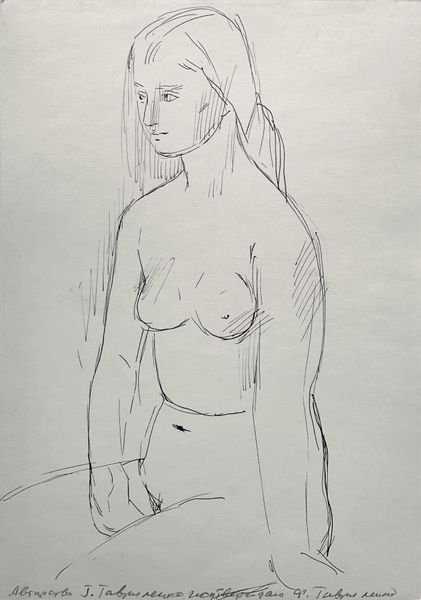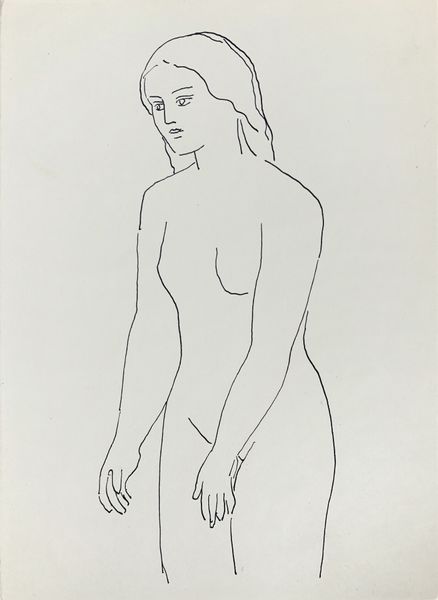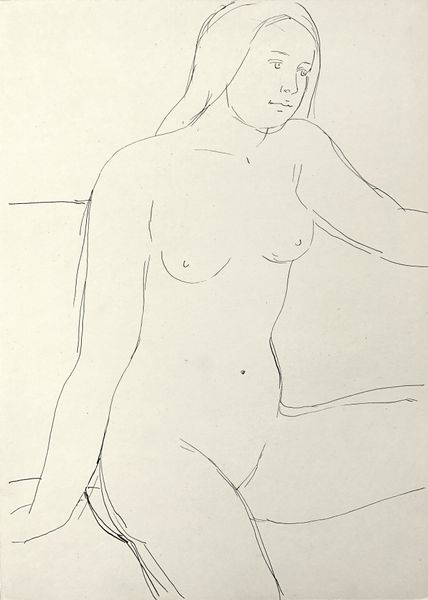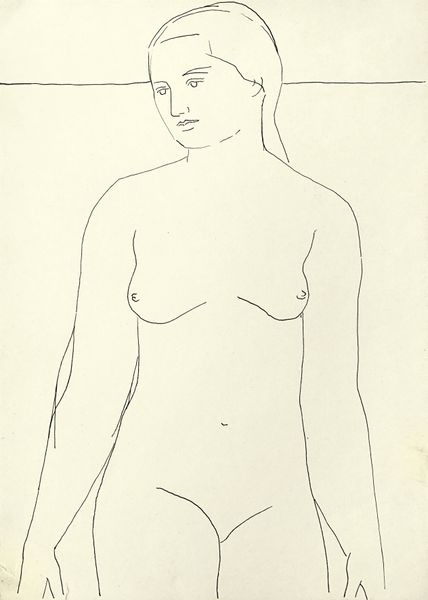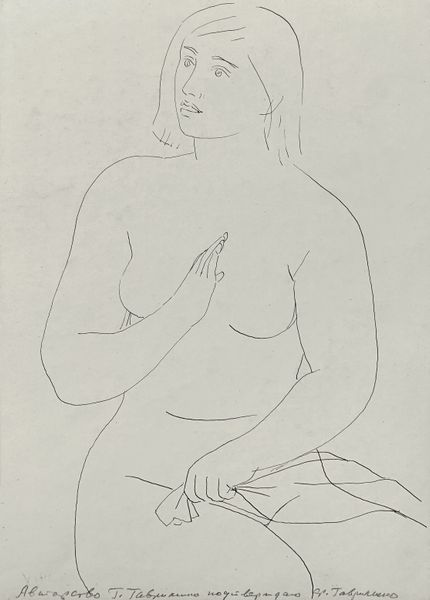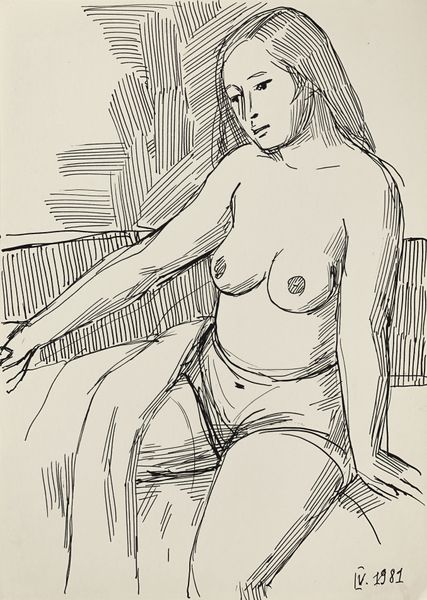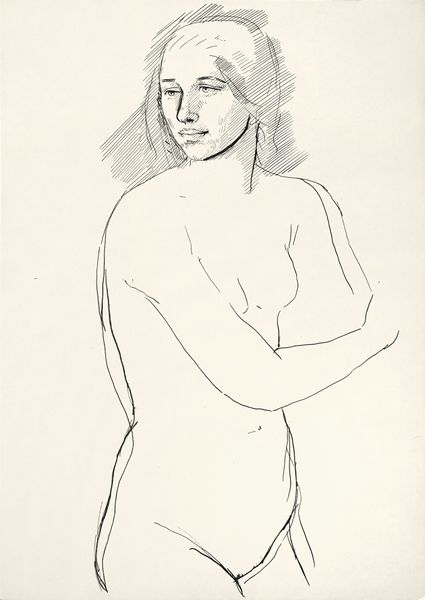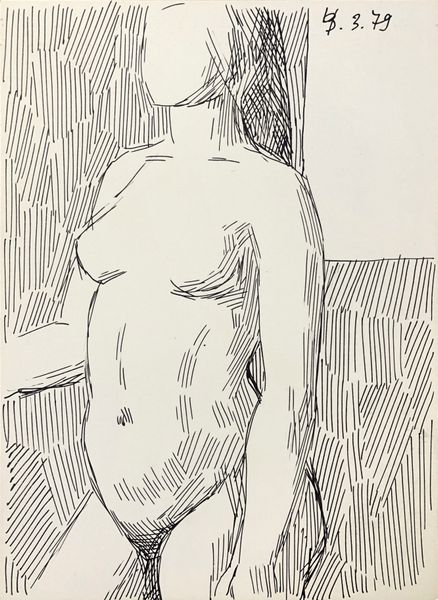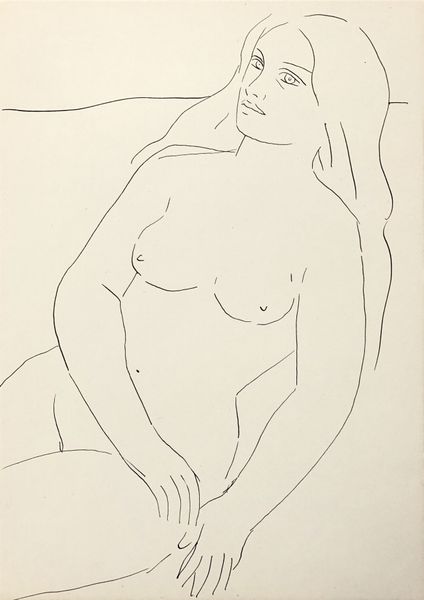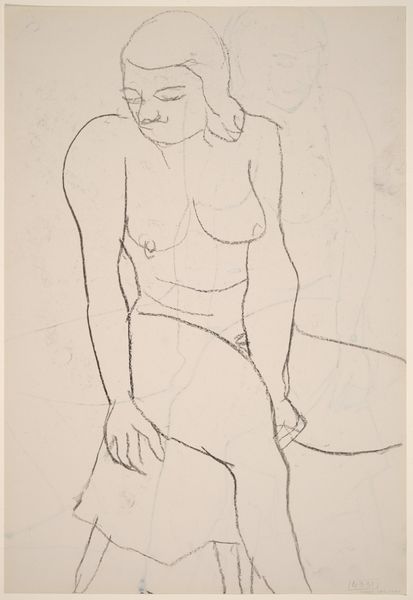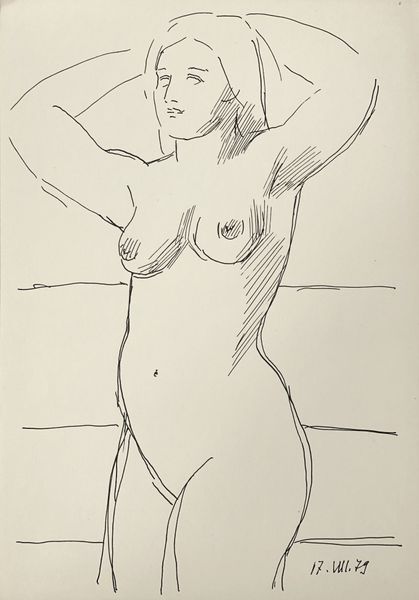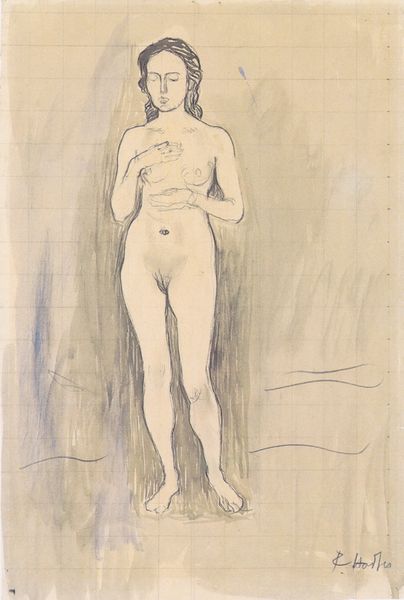
drawing, paper, ink, pen
#
portrait
#
drawing
#
amateur sketch
#
facial expression drawing
#
light pencil work
#
thin stroke sketch
#
pencil sketch
#
figuration
#
paper
#
ink
#
ink drawing experimentation
#
pen-ink sketch
#
line
#
pen
#
portrait drawing
#
pencil work
#
nude
#
initial sketch
Copyright: Hryhorii Havrylenko,Fair Use
Curator: This is Hryhorii Havrylenko’s "Nude sitting," a pen and ink drawing from 1976. The work resides in a private collection. Editor: There’s something quite stark about it. It's almost aggressively simple, reducing the figure to its most fundamental lines. It creates a mood that's both vulnerable and confrontational. Curator: I see it as a study in economy. The process, using only line and the starkness of ink, speaks volumes. The lines, although simple, are incredibly considered. I wonder, what type of paper was easily available, and what kind of ink did the artist have access to in the mid-1970s? Was this drawing produced quickly as a study for other works? Editor: Absolutely, and it's interesting how the lines themselves aren’t just descriptive. The hatching in the background seems to actively confine the figure, like the lines are themselves creating societal constraints. And look at how gender is navigated through these almost minimalist strokes—are they a statement on how the female form is viewed through a specifically male lens? Curator: It's less about perfection and more about honest observation, perhaps. The texture of the paper surely influenced the flow of ink. Also, note that even within its limited palette, Havrylenko achieves volume and form. It is intriguing, isn't it, that from a materialist perspective, it reveals an entire approach to figuration within the resources he possessed? Editor: Yes, and the rawness begs questions about labor, class, and the female form. Considering its creation in 1976, we might ask how it challenged—or reinforced—prevailing societal expectations regarding the representation of the nude and women in the Ukrainian SSR? Does it offer liberation, or just more objectification? Curator: Good point, by studying the materials and processes, perhaps insights into artistic intention surface—or even the sociopolitical realities shaping creative choice? Editor: I agree. Viewing this nude drawing offers more than meets the eye. We must look at all artistic contexts. Curator: Yes, from the material constraints of the studio to political tensions, the piece reveals insight on production and observation in art making.
Comments
No comments
Be the first to comment and join the conversation on the ultimate creative platform.
